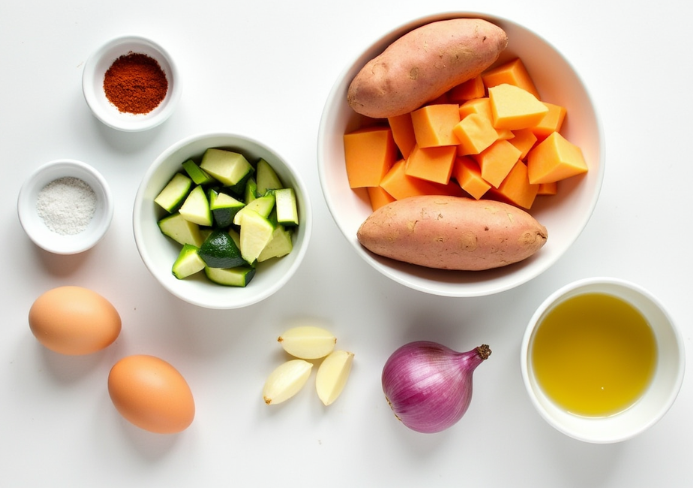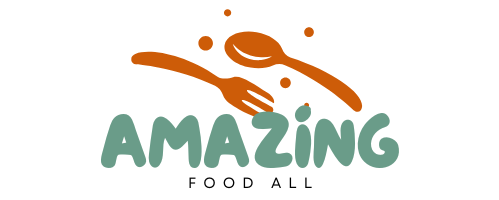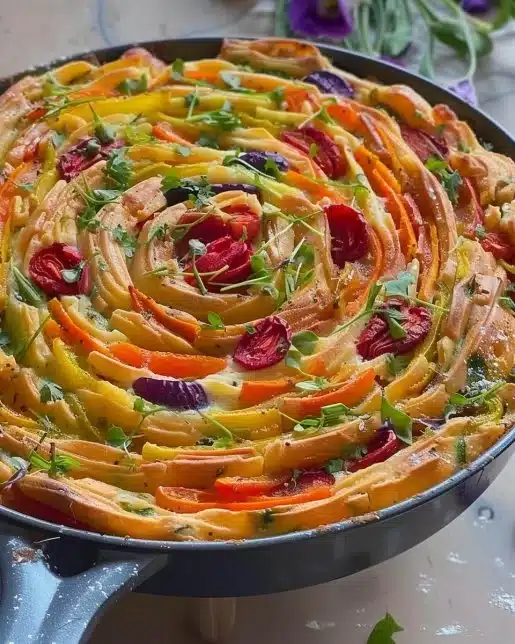Eating Real Food in Real Life + 3 Recipes – The Things I Love Most
What Does Real Food Mean in Real Life?
In a world full of packaged snacks, fast food, and sugary drinks, the idea of eating real food might sound like a trend—but it’s far more than that. Real food is about choosing ingredients that are as close to their natural state as possible. It’s about skipping the additives, the preservatives, and the artificial flavors.
Table of Contents
Eating real food in real life means embracing food that fuels your body, nurtures your soul, and doesn’t demand perfection. It’s not about being rigid or going 100% organic. It’s about making consistent, conscious choices—even when life gets busy.
According to Harvard’s Healthy Eating Plate, a balanced real food diet focuses on vegetables, fruits, whole grains, healthy proteins, and good fats. This isn’t about eating perfectly—it’s about eating intentionally.
Why Real Food Matters (More Than Ever)
We’re exposed to ultra-processed options every day. They’re convenient, but over time, they can drain your energy, increase your risk of chronic illness, and leave you feeling sluggish.
That’s where real food makes a difference:
- It’s nutrient-dense, providing vitamins, minerals, and fiber.
- It supports gut health, immunity, and energy.
- It reduces your intake of added sugars, sodium, and unhealthy fats.
The best part? It’s doable, even on a budget. The Beginner’s Guide to Clean Eating shows that with just a few changes, you can eat better without overhauling your whole routine.
Common Challenges of Eating Real Food Daily
Let’s be honest—eating real food every day can feel overwhelming when:
- You’re constantly on the go
- You don’t have hours to prep meals
- Grocery prices feel sky-high
- You’re unsure where to start
But that’s where smart planning, pantry basics, and quick meals come in.
Simple Strategies to Make Real Food Work in Real Life
Here’s how you can realistically embrace real food without stress:
- Meal Plan for the Week: Create a 5-day dinner outline based on what’s in your pantry and what’s seasonal.
- Batch Cook Staples: Make large portions of rice, roasted veggies, or shredded chicken to mix into multiple meals.
- Stock Smart Pantry Essentials:
- Canned beans
- Brown rice or quinoa
- Tomato paste and crushed tomatoes
- Olive oil and spices
- Keep It Simple: A real food meal can be as easy as roasted veggies + grilled protein + olive oil drizzle.
- Prep Once, Eat Twice: Make enough dinner so you have leftovers for lunch.
Real Food vs Processed: A Quick Look
| Real Food | Processed Food |
|---|---|
| Whole fruits & vegetables | Fruit snacks with dyes |
| Brown rice & oats | Instant noodles |
| Home-cooked meals | Frozen TV dinners |
| Natural fats (olive oil) | Hydrogenated oils |
| Grass-fed meat | Deli meats with additives |
My Personal Journey with Real Food
I didn’t grow up eating real food. Like many, I relied on drive-thru dinners and sugary cereals. But a few years ago, I started having energy dips, stomach issues, and brain fog. That’s when I slowly started learning, cooking, and loving the real food lifestyle.
I’m not perfect—there are still store-bought snacks in my pantry. But my fridge is now full of whole ingredients, and my energy? So much better.
3 Real Food Recipes You’ll Crave
Veggie-Packed Sweet Potato Hash
This recipe is bright, hearty, and loaded with flavor.
Ingredients:
- 2 medium sweet potatoes, diced
- 1 red bell pepper, chopped
- 1 zucchini, chopped
- ½ red onion, thinly sliced
- 2 cloves garlic, minced
- 1 tbsp olive oil
- ½ tsp smoked paprika
- Salt and pepper to taste
- 2 eggs (optional for topping)
Instructions:
- Toss diced sweet potatoes in olive oil and roast at 400°F for 20 minutes.
- Add the rest of the veggies and roast 15 minutes more.
- Fry or poach eggs and serve on top for extra protein.
Tip: You can batch roast the veggies ahead of time and reheat during the week.

One-Pan Lemon Garlic Chicken with Greens
A 30-minute dinner that feels fancy but uses only one pan.
Ingredients:
- 2 boneless, skinless chicken breasts
- 3 cups baby spinach or kale
- Juice of 1 lemon
- 3 cloves garlic, minced
- 1 tbsp olive oil
- ½ tsp dried oregano
- Salt and pepper
Instructions:
- Season chicken with salt, pepper, garlic, and oregano.
- Sear chicken in a pan with olive oil for 4-5 minutes per side.
- Add greens and lemon juice. Cook until wilted and juicy.
Variations: Add cherry tomatoes or white beans for extra bulk.
No-Bake Peanut Butter Energy Bites
Perfect for snacking or breakfast on-the-go.
Ingredients:
- 1 cup rolled oats
- ½ cup peanut butter
- ¼ cup honey or maple syrup
- ¼ cup mini dark chocolate chips
- 1 tsp vanilla extract
- Pinch of salt
Instructions:
- Mix all ingredients in a bowl.
- Roll into 1-inch balls.
- Store in fridge or freezer.
Bonus: These are kid-approved, freezer-friendly, and customizable.
Final Thoughts: Eat What You Love, Love What You Eat
Real food doesn’t need to be a luxury or a chore. With simple routines, flexible recipes, and the freedom to not be perfect, you can build a sustainable real food lifestyle that nourishes your family—and your taste buds.
Try starting with one meal a day. You might be surprised how good food can make you feel.
FAQs: Real Food, Real Questions
What is considered real food?
Real food refers to foods that are minimally processed, free from artificial ingredients, and close to their natural form—think fruits, vegetables, grains, legumes, meats, and dairy.
Is real food always organic?
No. While organic is a great option, real food can still come from conventional sources. Focus on whole, recognizable ingredients first.
How can I start eating real food on a budget?
Plan your meals, buy in bulk, shop seasonally, and use pantry staples like beans and rice. You don’t need to buy everything fresh or organic.
What are examples of real food meals?
Stir-fries with veggies and rice, baked salmon with sweet potatoes, homemade soups, and overnight oats with fruit.
Is clean eating the same as eating real food?
They overlap, but clean eating often avoids certain food groups (like gluten or dairy), while real food is more about ingredient quality and minimal processing.
Can kids enjoy eating real food too?
Absolutely! Kids love real food when it’s flavorful, fun, and familiar—think fruit kabobs, build-your-own tacos, or DIY snack boxes.






